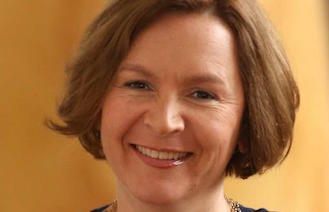by John Trybus, Managing Director
Disasters are part of our lives now, tomorrow and the day after, proclaims social strategist Regine Webster.
So how then do you protect lives and help communities recover when Mother Nature takes a turn for the worst and wreaks havoc economically and beyond? One key answer: strategic disaster philanthropy.
This week’s social strategist is vice president of the Center for Disaster Philanthropy (CDP), a newly formed organization that aims to give individual, family, corporate and institutional donors the resources to make informed and sustainable decisions about donations during times of disaster in the U.S. and abroad.
Regine has worked at the intersection of disaster philanthropy for more than 17 years. After stints at the Bill & Melinda Gates Foundation and the Conrad Hilton Foundation among other places, Regine found her way to CDP.
“I think I’m like a lot of people in that my career path has been a winding road,” Regine says. “I was really drawn to supporting the needs of individuals whose lives had been devastated by disasters, conflict and famine.”
Having visited disaster zones throughout the U.S., Africa and Asia, she knows a thing or two about being at the epicenter of chaos. Curious about what that’s like?
“I think the word that most comes to mind is humbling,” explains Regine. “On the one hand, visiting disaster zones is incredibly moving and challenging. But the humbling part comes in because it’s amazing to see the resilience of individuals, families and communities. People rebuild. They pick up the ruble, move it aside, find ways to get their children back in school and get businesses back up and running. People take care of one another, which is the beacon of light and inspiration.”
From preparing for hurricanes to rebuilding after tsunamis, CDP advocates that not just any disaster philanthropy will do. Rather it is strategic disaster philanthropy that creates a lasting impact on the lives and communities targeted. Here’s a preview of Regine’s take on how to get giving to continue over time:
- Make it sustainable: understand the disaster life cycle. What does effective philanthropy look like? “Part of it is recognizing that the needs of a disaster span a much wider continuum then just the hours and days following the event,” Regine explains. “And so it’s about encouraging the private philanthropic community to sustain their attention and to direct human, financial or technical resources to disasters across that spectrum of risk reduction to response and then to recovery so that we can make sure that we’re collectively addressing mitigation, preparedness, response, recovery and reconstruction issues that are affecting communities worldwide.”
- Cash is not always king. Don’t forget other forms of corporate engagement! “Cash donations at the onset of a disaster are so important but companies can bring to bear the other resources they have to offer,” says Regine. “I think the volunteerism element is something that is also changing as we speak and something that’s becoming more professionalized. Opportunities to connect corporations to response activities are done in a more vetted and thoughtful manner.” Case in point: Tide Loads of Hope Campaign.
- An ounce of prevention is worth a pound of cure. More than one-third of giving is typically done within the first four weeks of a disaster, according to some studies. But what about subsequent needs? Offers Regine: “You need to smooth out those peaks and valleys [in the disaster lifecycle] to make sure that people give in the most effective and strategic fashion all 365 days of the year.”
Listen to my interview with social strategist Regine Webster to learn more about strategic disaster philanthropy and how to get giving to continue over time in challenging circumstances.

